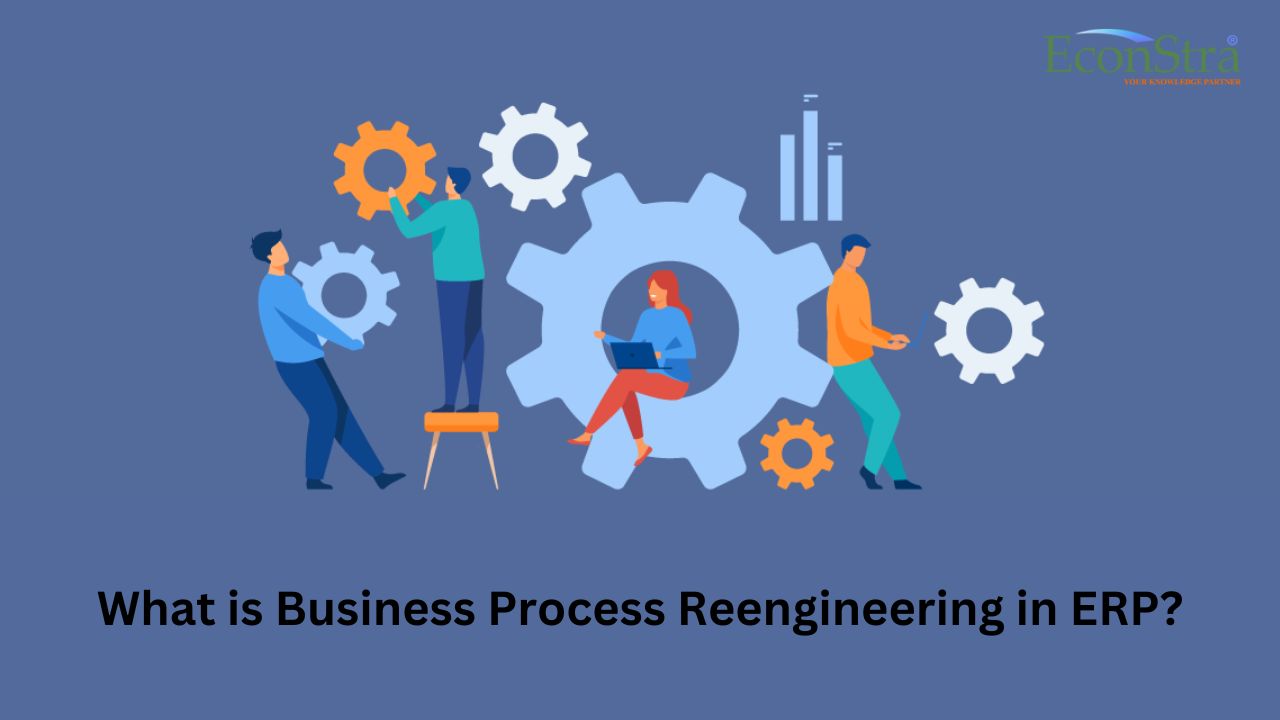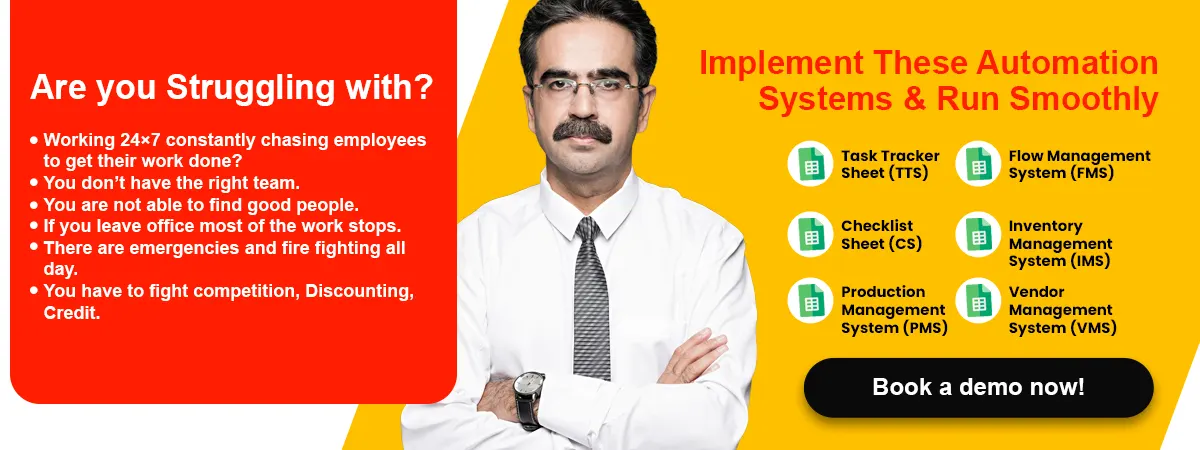by Soumyajit Admin
Share

In the fast-paced world of modern business, staying ahead of the competition is essential for long-term success. To achieve this, organizations are constantly seeking ways to streamline their operations, enhance efficiency, and maximize profitability. This is where Business Process Reengineering (BPR) in Enterprise Resource Planning (ERP) comes into play.
Today, we will delve deep into the concept of BPR in ERP systems, exploring its significance, benefits, and implementation strategies.
Business Process Reengineering in ERP refers to the fundamental rethinking and redesigning of an organization’s existing processes to align them with the capabilities of an ERP system. This transformative approach aims to optimize operations, eliminate redundancies, and foster innovation.
To understand BPR in ERP better, let’s explore, “What is Business Process Reengineering in ERP” its core principles, and how it can drive your business toward greater efficiency and success.
What is Business Process Reengineering in ERP?
Business Process Reengineering (BPR) in ERP is a strategic approach to reimagining and redesigning the way an organization conducts its processes using an Enterprise Resource Planning system. ERP systems are sophisticated software solutions that integrate various aspects of business operations, such as finance, human resources, inventory management, and customer relationship management, into a unified platform. BPR in ERP seeks to align an organization’s existing processes with the capabilities of this ERP software to enhance efficiency, reduce costs, and improve overall performance.
Key Principles of Business Process Reengineering in ERP
Process Redesign: The primary goal of BPR in ERP is to redesign and streamline existing processes. This involves eliminating unnecessary steps, automating repetitive tasks, and reconfiguring workflows to optimize efficiency. This step often requires a thorough examination of current processes, identifying bottlenecks, and finding ways to eliminate them.
Customer-Centric Approach: BPR in ERP emphasizes a customer-centric perspective. Organizations must understand their customers’ needs and preferences to align their processes accordingly. By doing so, businesses can provide better customer experiences, which can lead to increased customer loyalty and revenue.
Cross-Functional Collaboration: Collaboration among different departments and teams is crucial during the BPR process. ERP systems facilitate this collaboration by providing a centralized platform where information can be accessed and shared easily. This cross-functional approach helps in breaking down silos and improving communication within the organization.
Technology Integration: BPR in ERP relies on the integration of advanced technologies and software solutions. ERP systems provide a foundation for this integration, allowing businesses to incorporate automation, data analytics, and artificial intelligence into their processes. These technologies can enhance decision-making and provide valuable insights for process improvements.
Continuous Improvement: BPR in ERP is not a one-time effort but an ongoing process. It requires a commitment to continuous improvement and adaptability to changing market conditions. Regularly monitoring and analyzing performance metrics is essential to identify areas for further optimization.
The Benefits of Business Process Reengineering in ERP
Implementing BPR in ERP can offer numerous advantages to organizations, helping them thrive in today’s competitive business landscape.
Let’s explore some of the key benefits:
- Enhanced Efficiency: BPR in ERP eliminates redundant tasks and automates processes, resulting in improved operational efficiency. This translates to reduced lead times, faster decision-making, and higher productivity.
- Cost Reduction: By optimizing processes and reducing manual labor, BPR in ERP can lead to significant cost savings. This is achieved through lower labor costs, reduced errors, and better resource allocation. Also, check out our article on “How Does Business Automation Help In Cost Reduction?”
- Improved Customer Satisfaction: BPR in ERP allows organizations to align their processes with customer needs, leading to better customer experiences. Happy customers are more likely to remain loyal and recommend your products or services to others.
- Better Data Management: ERP systems offer robust data management capabilities, enabling organizations to gather, store, and analyze data more effectively. This data-driven approach can lead to informed decision-making and improved business strategies. Also, check our article on “Embracing Automation In Business Management Systems”
- Competitive Advantage: Organizations that embrace BPR in ERP gain a competitive edge by being more agile and responsive to market changes. They can adapt quickly to evolving customer demands and industry trends.
- Compliance and Risk Management: ERP systems often come with built-in compliance features, helping organizations adhere to industry regulations and reduce the risk of non-compliance-related penalties.
- Strategic Insights: BPR in ERP provides valuable insights into business operations through data analytics and reporting. This enables organizations to make data-driven strategic decisions and plan for future growth.
Also Read: Benefits Of Business Process Automation
Implementing Business Process Reengineering in ERP
The successful implementation of BPR in ERP requires careful planning and execution. Here are the key steps to consider when embarking on this transformative journey:
- Assessment and Analysis: Initiating your BPR in the ERP journey requires a deep dive into your current processes. Identify bottlenecks where tasks slow down, pinpoint redundancies that waste resources, and recognize areas that demand improvement. Moreover, align these findings with your organization’s overarching goals and objectives to ensure that the BPR efforts are synchronized with your strategic vision.
- Set Clear Objectives: The success of your BPR project hinges on well-defined objectives. Craft objectives that are specific, measurable, and achievable. More importantly, ensure these objectives are in harmony with your organization’s strategic goals. This alignment guarantees that your BPR initiative contributes to the broader vision of your business.
- Cross-Functional Team: Building a cross-functional team is pivotal to the success of your BPR in ERP endeavor. This team should comprise members from various departments and hierarchical levels within your organization. Their collective responsibility is to drive the BPR initiative, fostering collaboration and breaking down silos between different units, ensuring a holistic approach to process improvement.
- Select the Right ERP System: Choosing the appropriate ERP system is a crucial decision. Evaluate ERP options carefully, considering factors like scalability, customization capabilities, and user-friendliness. The chosen ERP system should seamlessly align with your organization’s unique needs and be capable of supporting your BPR objectives effectively.
- Redesign Processes: The heart of BPR in ERP lies in process redesign. Focus your efforts on enhancing efficiency and customer-centricity. Rethink and reshape workflows to eliminate redundancies and bottlenecks. Leverage the capabilities of your chosen ERP system to automate tasks and streamline operations, ensuring a more efficient and customer-oriented approach.
- Training and Change Management: Smoothly transitioning to the new ERP system and redesigned processes requires comprehensive training for your employees. Equip them with the skills and knowledge needed to navigate the system comfortably. Additionally, implement robust change management strategies to facilitate the cultural shift within your organization, ensuring a seamless transition and minimal disruption.
- Testing and Validation: Before rolling out the revamped processes, thorough testing is essential. Conduct comprehensive assessments to identify any issues or challenges that may arise during implementation. Validation processes ensure that the changes align with the desired objectives, providing assurance that your BPR efforts will yield the expected results.
- Continuous Improvement: BPR in ERP is not a one-time effort but an ongoing journey. Post-implementation, it is critical to maintain vigilance and monitor the performance of the new processes. Continuously evaluate key performance metrics and gather feedback from employees and stakeholders. This feedback loop allows for necessary adjustments and improvements to ensure sustained success and adaptability to changing business landscapes.
Also Read: Tips for Business Process Automation
NOTE:
ECONSTRA, a leading business consultancy firm specializing in business management automation systems, introduces a transformative approach to Enterprise Resource Planning (ERP) with Business Process Reengineering (BPR). BPR in ERP entails strategically revamping existing business processes to enhance efficiency, reduce costs, and foster organizational growth. ECONSTRA employs cutting-edge technology and industry best practices, tailoring BPR in ERP to meet the specific needs of each client. This comprehensive process involves reassessing workflows, eliminating redundancies, and implementing innovative solutions to streamline operations. In the dynamic Indian business environment, ECONSTRA’s dedication to BPR in ERP through its business consultancy services empowers enterprises to stay agile, competitive and well-positioned for sustained success amid ongoing industry changes.
Conclusion On: What is Business Process Reengineering in ERP?
In conclusion, Business Process Reengineering in ERP is a powerful approach that can revolutionize the way organizations operate. By realigning processes with the capabilities of ERP systems, businesses can achieve enhanced efficiency, reduced costs, and improved customer satisfaction. The key principles of BPR, including process redesign, customer-centricity, cross-functional collaboration, technology integration, and continuous improvement, provide a roadmap for success.
The benefits of implementing BPR in ERP are far-reaching, offering organizations a competitive edge in today’s dynamic business environment. From enhanced efficiency and cost reduction to improved data management and strategic insights, the advantages are substantial.
However, it’s important to approach BPR in ERP with careful planning and a focus on clear objectives. Involving a cross-functional team, selecting the right ERP system, and prioritizing training and change management are crucial steps in the process.
Ultimately, embracing Business Process Reengineering in ERP is not just about optimizing processes; it’s about future-proofing your organization and positioning it for long-term success in a rapidly evolving business landscape.
So, if you’re looking to transform your business operations and stay ahead of the curve, BPR in ERP may be the key to your success.
STAY IN THE LOOP
Subscribe to our free newsletter.
In today’s competitive business landscape, companies are constantly seeking ways to reduce operational costs while maintaining or improving efficiency and customer satisfaction. Customer Relationship Management (CRM) systems have emerged as vital tools that enable businesses to achieve these goals. As a leading business consultancy, Econstra understands the importance of leveraging CRM technology to streamline operations, […]
Why Operational Costs Are Draining Your Profits? Operational costs are a critical aspect of running a successful business, but when not managed properly, they can drain your profits and stifle growth. In a competitive market, maintaining profitability requires keen oversight of expenses and strategic planning. Econstra, as a leading business consultancy, provides insights and strategies […]
In the rapidly advancing digital landscape, Artificial Intelligence (AI) tools have emerged as transformative assets for businesses. Their potential to enhance efficiency, streamline operations, and drive innovation makes them invaluable for business consultants and organizations worldwide. For business consultants in India, AI’s strategic application can be particularly advantageous in navigating a diverse and dynamic market. […]
In today’s competitive business landscape, marketing is more crucial than ever. Companies are constantly seeking innovative strategies to stay ahead of the curve. Yet, navigating the complexities of modern marketing requires more than just creativity; it demands expertise and strategic insight. This is where a Business Consultant can make a transformative impact. Business consultants offer […]





